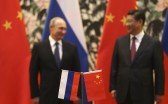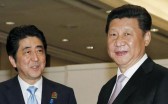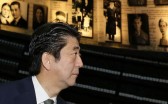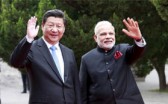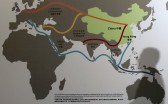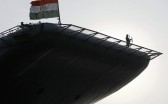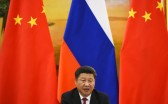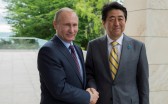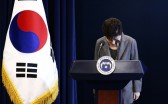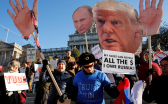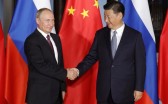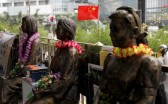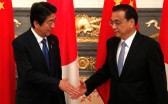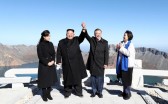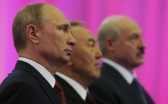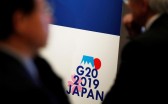Jennifer Lind has sketched positive prospects for South Korean-Japanese relations and the history issue. She broadly finds that geopolitical pressures will overwhelm historical narratives of animosity or re-write them in such a way as to be useful for current geopolitical needs. This is a realist and instrumentalist approach to historical disputes. The substance of the disputes may be genuine, but more important is their malleable impact on policy. Particularly, Lind foresees traditional realist geopolitical pressures shaping these narratives. For example, the United States and Japan, and Germany and France, all reconciled relatively rapidly after World War II, because all shared concerns about communist expansionism. This logic similarly suggests that South Korea and Japan will reconcile as Chinese power in the region expands. And Lind correctly notes that many American observers of South Korean-Japanese tension—including myself—make this argument. South Korea and Japan, we say, share a lot: liberalism, democracy, capitalism, the American ally, anxiety over North Korea and China. History then is a hassle. It gets in the way, hijacks the discussion, and leads down blind alleys ignorant of the obvious utility of a common front against the non-democracies of the region.
Geopolitics vs History
Lind’s framing is useful methodologically as well. It makes a solid prediction—that South Korea and Japan should reconcile as Chinese power rises and becomes more threatening. Lind says this has occurred in other parts of Asia. Other maritime states uncomfortable with Chinese power have buried the hatchet with Japan—or perhaps more correctly, chosen to forget or ignore it. States can, of course, control which memorials are put up, which national days are celebrated, how textbooks are written, and so on. So as China rises, will South Korea and Japan go the same way? I applaud Lind for putting forward a testable hypothesis.
History or a Narrative?
I believe, however, that South Koreans will reject Lind’s framing. That does not mean she is wrong—indeed, I suspect she is not. Social construction theory has broadly demonstrated in the last few decades just how much elites can shape, if not re-write, national history for their own purposes. But rather, I imagine many Koreans, especially on the left, will find that Lind’s discussion ignores the substance of their concerns. To those who have put up the “comfort women” statues, exported the “comfort women” campaign to the West, painted South Korean subway cars with images of the Dokdo islands, or insisted on ‘Dokdo-cams’ in South Korean ministry buildings, the tension with Japan is not a ‘narrative,’ with the implication that it can be reshaped or redirected. It is a major element of Korean national history; indeed, it remains a central element in South Korean national identity.
To these voters and activists, Lind’s approach likely feels too manipulative and cynical. Making “history,” with all the weight that term carries in South Korean media and popular culture, into a “narrative” treats the salience of historical concerns as a product of elite responses to international pressures rather than as substantial concerns in themselves. Yet, South Korea today certainly operates around that belief. Its elites are almost dogmatic on the notion that there is a “correct view of history” from 1910 to 1945, and transgressors as varied as former President Park Geun-hye’s sister and Japan-Korea relations expert Park Yu-ha have felt the weight of quasi-censorship when they have contested it.
This, in turn, raises the problem of blowback or entrenchment in the construction of national narratives. In other words, Lind and the South Korean left may both be correct. The South Korean government and leftist activists may indeed “socially construct” a narrative of South Korean national identity focused on the colonial period. In my first contribution to this debate, I suggested this by noting how much the South Korean film industry now hammers away at the colonial period in sharp nationalist color. That would suggest, per Lind, that they could also make movies about Japan’s assistance to South Korean growth in the Park Chung-hee era.
But at some point that construction may become a genuine national belief. At some point, the narrative is no longer a narrative, because enough people deeply believe it. A rubicon is crossed. Perception becomes reality. Narrative becomes history as it sinks into the culture and is entrenched over time as younger generations absorb it wholly. Elites are then trapped, and their choices constrained. What was once a narrative becomes blowback, which elites cross at their peril. This, I believe, is where South Korea is now on historical issues—especially as regards Dokdo and the “comfort women.”
Park Geun-hye learned this the hard way. She came of an age when Japan helped South Korean growth, Dokdo was a non-issue, and the “comfort women” were a vague rumor. She pushed through a 2015 deal on the “comfort women” that reflected that era, surprisingly unaware of three decades of South Korean nationalism intensely focused on the colonial period. The blowback has been severe. And as president, Moon Jae-In has persisted in the left’s tight focus on Japan, referring to the “comfort women” as a ‘war crime’ and ‘crime against humanity,’ and criticizing the deal.
Korean Exceptionalism?
Another area where I see South Koreans contesting Lind’s thesis is the notion that South Korea is exceptional in its focus on Japan’s wartime behavior. She writes, “Japan’s relations with the United States and other maritime powers…with Australia, India, the Philippines, and Singapore are not troubled by history.” This is a critical issue, because if Lind is right, it places the onus of adjustment on South Korea and suggests a nationalist fetish. Conversely, if the South Korean left and activist bloc are correct, then Japan is a regional pariah, disdained by many of its neighbors, and South Korea’s concerns are normalized. Settling this would be a massive historical-comparative enterprise, and to my mind, the data are simply not clear enough. But a few points can be made:
First, the South Korean insistence on an apology along the lines of Willy Brandt’s kneeling in Warsaw is a bridge too far. As Lind has pointed out in her work, Germany’s historical retrospection is an enormous outlier in the way most states have dealt with their historical misbehavior. Nor will the Japanese ever accept that the empire’s behavior was akin to the Holocaust, which saw ten million exterminated in industrial death camps. There is little regional insistence on this point; even the Chinese Communist Party, which grossly manipulates the Japanese invasion for its own nationalist purposes, does not insist on this. South Korea is an outlier here.
Second, postwar Japan never managed to lead Asia, whereas reformed Germany has played an anchor role in European integration. Even at the height of Japanese postwar growth, Japan was always somewhat isolated from the region. A yen bloc never really developed. Japanese soft power never moved the region. Japanese never emerged as a regional lingua franca in business or otherwise. This has always been something of a mystery in the study of East Asian political economy. South Koreans blame this on Japan’s endless dancing around of its war-time behavior and the lack of strategic trust that it engendered. That strikes me as correct. A separate explanation is that the US role in Asia was so much more dominant than in Europe, while the Soviet threat was more distant, that few states anticipated Asian regionalism that could add much to bilateralism centered on Washington.
Third, wartime anniversaries do still occasion animosity, and my sense is that Lind’s statement above, that Japan has few other history fights, goes overbroad. I am not sure. This is a massive empirical question and, perhaps ultimately, a judgment call. But the United States did not, for example, apologize for the bomb drop, and the “comfort women” campaign has gone international. Even Dutch “comfort women” have sought an apology. British POW groups have tangled with the Japanese government, and Filipino education damns the Japanese period as the harshest of the three imperialisms in the country’s history (Spanish, American, and Japanese). My sense is that the Koreans are less exceptional here than Lind suggests. But I would agree that they are louder than other claimants. Where Japanese behavior is one issue among many in these regional and WWII states, it is an enormous issue, to the point of resembling a fetish, in South Korea.
Fourth, democracies’ concerns with Japanese wartime behavior are more morally weighty. The South Korean media, in a bid to reduce the exceptionalism/fetishism of South Korea’s anti-Japanism, often invoke China’s own similarly critical belaboring of the war. This is an understandable, but desperate, move, as outside observers will never take Chinese criticisms seriously, in my opinion. As a Leninist oligarchy (now evolving into an autocracy), China has no moral credibility on reckoning with history. Indeed, it is blatantly obvious that China uses history and Japan’s imperial behavior to retard Japanese balancing against China’s rise, isolate Japan from the region, and drive a wedge between it and South Korea. Beijing unleashes anti-Japan young nationalists almost at will to express displeasure when needed. The Chinese Communist Party also obviously instrumentalizes Japanese imperial misdeeds to cover up its own list of far worse horrors. The same applies to North Korea. No one wants to admit that communists in China and North Korea killed far more of their own people than the Imperial Japanese Army ever did. If the South Korea’s activist left wants to pursue Japan over history, it would be wise to cleave to concerns shared by states who discuss that history in good faith.
The Future of South Korean-Japanese Historical Tension
I do not share Lind’s optimism that geopolitical pressures will ultimately bring about a South Korean-Japanese reconciliation. Historical tension with Korea matters less in Japan than vice versa. So perhaps the Japanese government can dial down tension more at will than in South Korea. But in South Korea now, the colonial period has become a nationalist touchstone, a constant reference point in media, TV, film, sports events, civil society, national holidays, public transportation, cultural exports, student exchange programs, and so on. It is relentless.
This ubiquity, I believe, is due to the South Korean state’s need for a nationalism which is not overtly anti-North Korean—that is too socially divisive—and which compensates for the collaboration of many of South Korea’s founding fathers with the Japanese, most obviously Park Chung-hee. As a nation-building myth for a half-country locked in an existential legitimacy contest, anti-Japan nationalism fulfills a deep identity need. And South Koreans perceive that nationalism as real, not a narrative. It is entrenched: Syngman Rhee threatened to turn over South Korea to Kim Il-sung if the United States invited the Japanese in during the war; Japan-South Korea normalization was greeted with protest even under the Park dictatorship. The only sort of geopolitical pressure I could see driving South Korea toward serious reconciliation would be a Chinese ground invasion, which is highly unlikely.
So, while the tension can be managed, it will not go away, as the “comfort women” deal backlash and Moon’s tough rhetoric have demonstrated yet again. When North Korea disappears, the anti-Japan component of South Korean nationalism may no longer serve a nation-building purpose. But until then, the South Koreans will not let this go.

